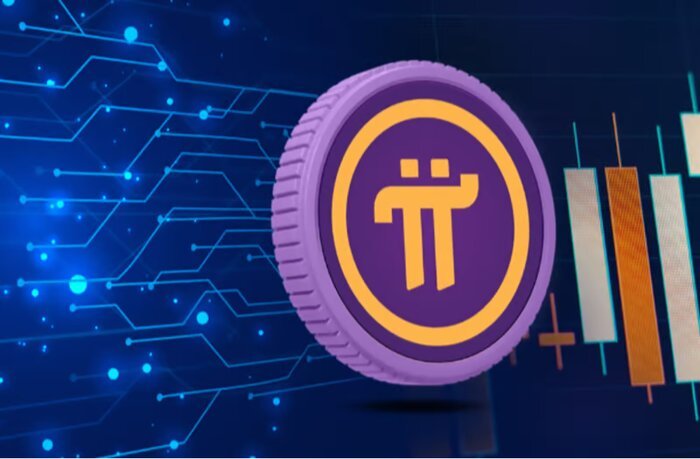Introduction: A New Era for Pi Network
February 20, 2025, marked a significant milestone in the cryptocurrency landscape with the long-awaited launch of Pi Network’s Open Mainnet. This event was a game-changer for millions of users who had been mining Pi Coins on their mobile devices since the project’s inception in 2019. For the first time, these users could transfer and trade their Pi Coins outside the Pi ecosystem, unlocking the potential for real-world utility.

However, as with many new cryptocurrency launches, the event was accompanied by extreme market volatility, with Pi Coin experiencing a rapid surge followed by an even more dramatic fall. This article delves into the details of the Pi Network mainnet launch, the market’s reaction, the reasons behind the price fluctuations, and what the future holds for this ambitious blockchain project.
Pi Network’s Mainnet Launch: What Happened?
Pi Network has long been one of the most controversial yet popular crypto projects due to its unique mobile mining mechanism. Unlike traditional cryptocurrencies that require expensive hardware for mining, Pi Network allowed users to earn Pi Coins by simply tapping a button on their smartphones daily.
After years of speculation and anticipation, the project’s Open Mainnet officially launched on February 20, 2025. This meant that:
- Pi Coin became tradable outside the Pi Network ecosystem
- Users could transfer their Pi holdings to exchanges
- Exchanges could list Pi Coin for trading
Several prominent cryptocurrency exchanges, including OKX, Bitget, and CoinDCX, quickly listed Pi Coin, fueling excitement among investors and traders.
Market Response: From Euphoria to Panic
The Initial Price Surge
Within the first hour of trading, Pi Coin’s price skyrocketed by over 35%, reaching a peak of $1.97. This surge was fueled by:
- Pent-Up Demand: Many users had accumulated large Pi balances but had never been able to trade them. The ability to finally cash out created a wave of buying interest.
- Exchange Listings: Major exchanges listing Pi Coin gave it legitimacy and accessibility.
- Speculative Trading: As with most new crypto launches, traders rushed in to capitalize on the hype, pushing the price higher.
The Sharp Decline
However, the excitement was short-lived. Within 24 hours, Pi Coin’s price crashed by over 55%, dropping to around $0.78. Several key factors contributed to this decline:
-
Mass Sell-Off by Early Miners
- Many early Pi miners had amassed significant holdings over the years. As soon as trading opened, they rushed to sell their coins, overwhelming the demand and causing a price drop.
-
Limited Exchange Listings
- While some exchanges listed Pi Coin, major platforms like Binance and Coinbase did not. Binance conducted a community poll to decide whether to list Pi Coin, with voting set to conclude on February 27, 2025. The absence of listings on top-tier exchanges limited Pi Coin’s market exposure and liquidity.
-
Unclear Real-World Use Case
- Despite the mainnet launch, Pi Network’s actual ecosystem remains underdeveloped. While the project has promised decentralized applications (dApps) and a functioning marketplace, these aspects are still in their early stages, making it difficult for investors to see immediate utility in holding Pi Coin.
-
Regulatory Uncertainty
- Pi Network has faced regulatory scrutiny, particularly in China, where authorities have previously warned against potential Ponzi-like schemes. Bybit CEO Ben Zhou referenced these concerns while criticizing the project, adding to market fears.
Industry and Community Reactions
Supporters’ Perspective
Many loyal Pi Network supporters remain optimistic, believing that the price volatility is only temporary. They argue that:
- Pi Network is still in its early stages, and more real-world applications will emerge over time.
- Once major exchanges like Binance and Coinbase list Pi Coin, its liquidity and market valuation will improve.
- Pi Network’s unique mobile mining system makes cryptocurrency accessible to a broader audience, which could drive long-term adoption.
Critics’ Perspective
Skeptics, on the other hand, have raised concerns about:
- Pi Coin’s lack of intrinsic value at this stage.
- The sustainability of the mining model, given that many users mined Pi Coins for free.
- Regulatory risks, particularly if governments classify Pi Network as a potential financial scam.
What’s Next for Pi Network?
The future of Pi Coin and Pi Network will largely depend on how the project evolves in the coming months. Here are some key areas to watch:
1. Binance and Other Exchange Listings
A Binance listing could significantly boost Pi Coin’s credibility and trading volume. If Binance’s community poll results in a listing, Pi Coin may see another surge in price.
2. Development of Pi Network’s Ecosystem
For Pi Coin to maintain long-term value, the project must:
- Launch functional dApps
- Enable real-world transactions using Pi Coin
- Build a sustainable economic model
The team behind Pi Network has promised future updates, but execution will be key.
3. Market Stabilization
Volatility is common in the early days of a new cryptocurrency. Once the initial speculation fades, Pi Coin’s price may stabilize at a more realistic level.
4. Regulatory Developments
Regulatory clarity will be crucial. If governments approve Pi Network’s model and classify it as a legitimate blockchain project, confidence in the token could grow. However, if more warnings and restrictions arise, it could hinder adoption.
Conclusion: Hype or Long-Term Potential?
The Pi Network mainnet launch was one of the most anticipated events in the crypto world, and its initial performance has been a rollercoaster ride. While Pi Coin saw early excitement and rapid growth, it quickly faced a steep decline due to profit-taking, limited exchange support, and concerns over its real-world use case.
Whether Pi Network succeeds or fades into obscurity will depend on its ability to build a functional ecosystem, gain regulatory approval, and secure listings on major exchanges.
For now, investors and enthusiasts should approach Pi Coin with caution, keeping an eye on key developments before making long-term decisions. 🚀🔍
What Are Your Thoughts?
Do you think Pi Coin will recover and establish itself as a major cryptocurrency? Or was the launch just another overhyped event? Share your views in the comments below! 💬🔥













